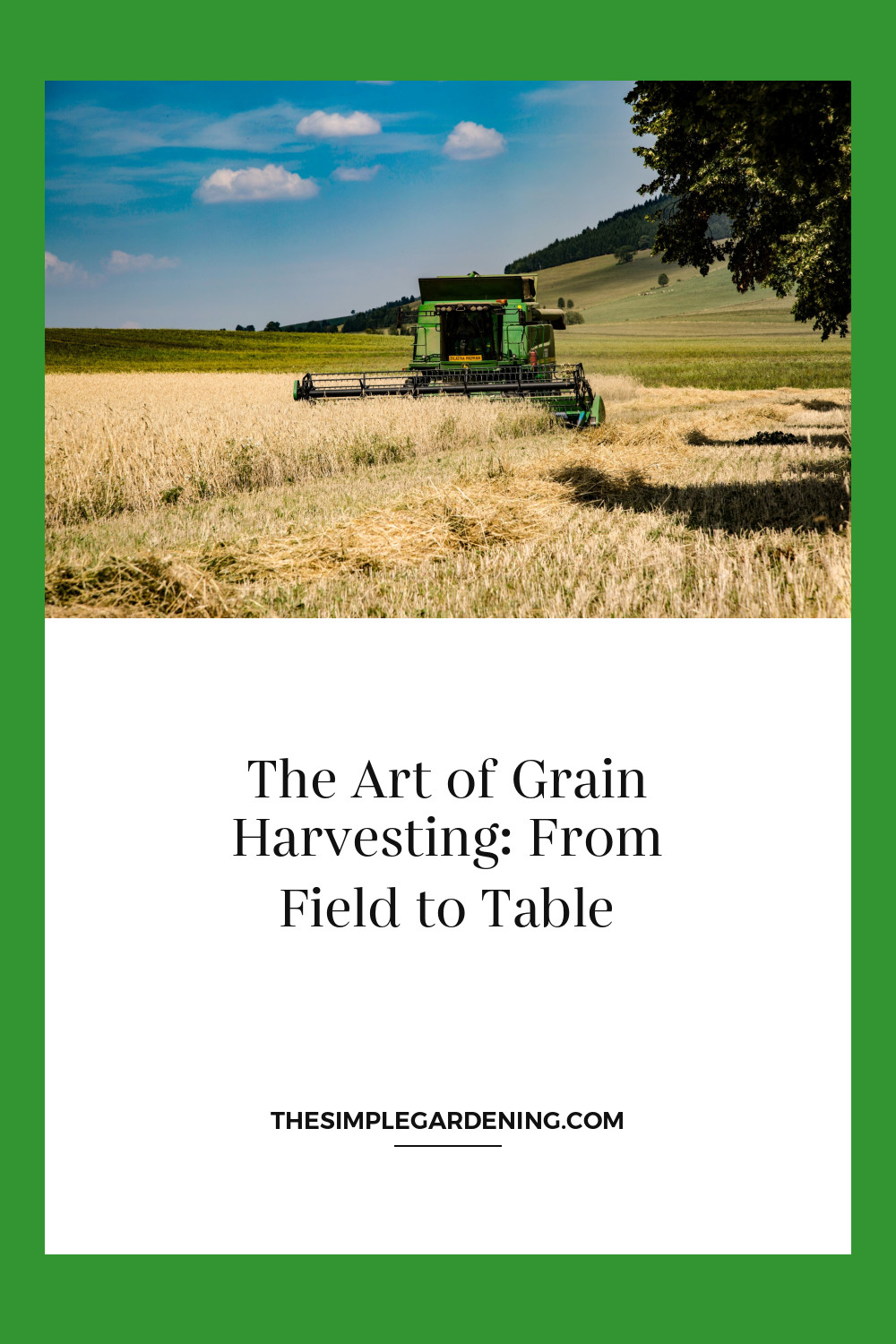Grain harvesting stands as a cornerstone of agricultural production, playing a pivotal role in supplying the world’s population with vital sustenance. Understanding its significance unveils the intricate tapestry of methods, technologies, and cultural traditions that have evolved over millennia to ensure the bounty of the harvest reaches our tables. Let’s embark on a journey through the fields, exploring the nuances of grain harvesting from ancient practices to modern innovations.
Overview of Grain Harvesting
Grains, encompassing diverse varieties like wheat, rice, corn, barley, and oats, serve as fundamental staples in global diets. The process of harvesting them extends far beyond mere collection, involving intricate techniques tailored to each grain’s characteristics and environmental factors.
Table 1: Commonly Harvested Grains
| Grain | Characteristics |
|---|---|
| Wheat | Versatile; used in various food products |
| Rice | Predominant in Asian cuisines; requires flooded fields |
| Corn | Widely used for animal feed and food processing |
| Barley | Hardy and adaptable; utilized in brewing and cooking |
| Oats | Nutrient-rich; popular in breakfast foods |
- Grains such as wheat, rice, corn, barley, and oats form the backbone of global agriculture, sustaining populations worldwide.
- Each grain possesses unique characteristics that influence its harvesting methods and applications.
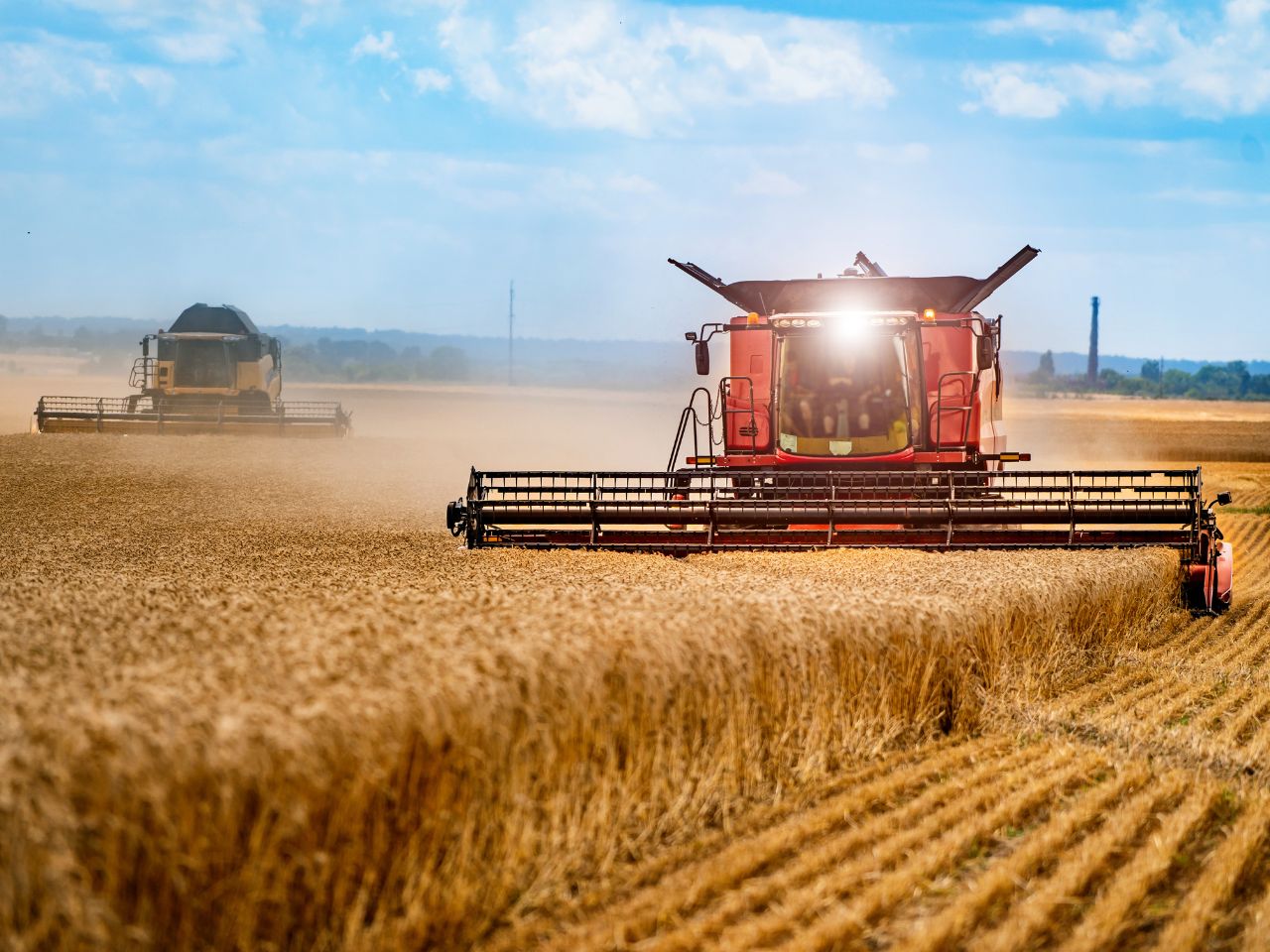
Source Image: grainhandlingdirect.com
Harvesting Methods
The evolution of grain harvesting methods mirrors the progression of human ingenuity, from the manual labor of antiquity to the mechanized marvels of the modern era. Let’s delve into the diverse techniques employed to gather nature’s bounty efficiently and sustainably.
Traditional Hand Harvesting
Before the advent of machinery, humans relied on manual labor to harvest grains, a practice still prevalent in regions characterized by small-scale agriculture. Hand harvesting, though labor-intensive, holds cultural and historical significance, embodying a deep connection between people and the land.
Table 2: Traditional Hand Harvesting Techniques
| Technique | Description |
|---|---|
| Sickle | Curved blade used for cutting individual stalks of grain, requiring precision and dexterity |
| Scythe | Long, curved blade attached to a handle, ideal for mowing down large swathes of grain |
| Flail and Winnowing | Beating harvested grain to separate seeds from chaff, followed by winnowing to remove debris |
- Traditional hand harvesting techniques, including the use of sickles, scythes, and flails, reflect centuries-old agricultural traditions.
- These methods, while labor-intensive, offer a connection to heritage and a deeper appreciation for the harvest.
Mechanized Harvesting
The Industrial Revolution heralded a new era of agricultural productivity with the introduction of machinery such as reapers, threshers, and harvesters. Mechanized harvesting revolutionized grain production, vastly improving efficiency and reducing the reliance on manual labor.
Table 3: Mechanized Harvesting Machinery
| Machinery | Function |
|---|---|
| Reaper | Cuts and gathers mature grain crops, accelerating the harvesting process |
| Thresher | Separates grain kernels from the rest of the plant, streamlining the threshing process |
| Harvester | Combines harvesting, threshing, and winnowing functions, automating the entire process |
- Mechanized harvesting machinery, including reapers, threshers, and harvesters, revolutionized grain production, increasing efficiency and reducing labor requirements.
- These machines automate the harvesting process, allowing for faster and more precise grain collection.
Combine Harvesting
The pinnacle of modern grain harvesting technology, combine harvesters integrate multiple functions into a single machine, offering unparalleled efficiency and versatility. Combines streamline the entire harvesting process, from cutting and threshing to winnowing, dramatically reducing time and labor costs.
Table 4: Features of Combine Harvesters
| Feature | Description |
|---|---|
| Cutting Platform | Wide header equipped with blades to cut standing grain, guiding it into the machine |
| Threshing Mechanism | Rotating drum or cylinder that separates grain kernels from stalks and husks during threshing |
| Grain Tank | Storage compartment for harvested grain, allowing continuous operation without frequent unloading |
- Combine harvesters represent the epitome of grain harvesting technology, seamlessly integrating multiple functions to maximize efficiency.
- These machines offer unparalleled speed and precision, significantly reducing the time and labor required for harvesting.
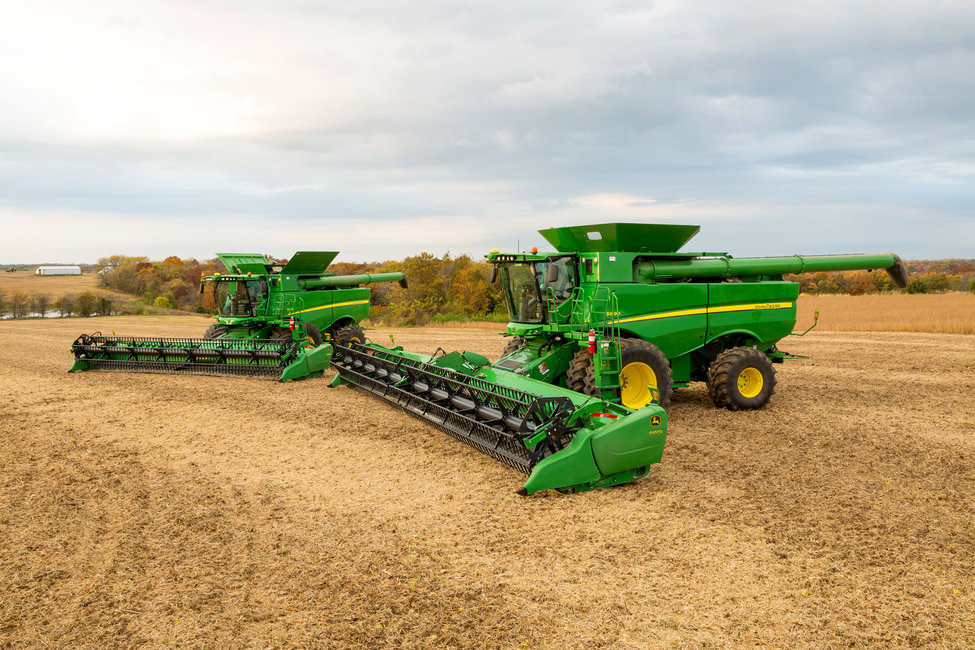
Source Image: blog.machinefinder.com
Timing of Harvest
Determining the optimal time for grain harvest involves a delicate balance of factors, including weather conditions, crop maturity, and market demand. Timely harvesting is crucial to maximizing yield and quality, ensuring that grains are harvested at peak ripeness while avoiding losses due to adverse weather or overripeness.
Factors Influencing Harvest Timing
Several key factors influence the timing of grain harvest:
- Weather Conditions: Favorable weather, including dry and sunny days, is essential for successful harvesting, as wet conditions can delay operations and increase the risk of grain spoilage.
- Crop Maturity: Monitoring the maturity of grain crops through visual assessment and technological tools helps determine the ideal harvest time, ensuring maximum yield and quality.
- Market Demand: Responding to market demand for specific grain varieties and qualities influences harvest timing, as producers aim to meet consumer preferences and price fluctuations.
Table 5: Factors Influencing Harvest Timing
| Factor | Influence |
|---|---|
| Weather Conditions | Dry, sunny weather facilitates timely harvesting, while rain or high humidity can delay operations and spoil grains |
| Crop Maturity | Monitoring grain maturity through visual inspection and technological tools ensures optimal harvest timing |
| Market Demand | Responding to consumer preferences and price fluctuations guides harvest timing decisions |
Strategies for Optimizing Harvest Timing
To maximize yield and quality, producers employ various strategies to optimize harvest timing:
- Monitoring Crop Development: Regular monitoring of crop development using tools such as satellite imagery and moisture sensors helps identify optimal harvest windows.
- Utilizing Weather Forecasts: Keeping abreast of weather forecasts allows producers to schedule harvesting operations during periods of favorable weather, minimizing the risk of grain spoilage.
- Collaborating with Market Channels: Establishing strong communication channels with buyers and market intermediaries enables producers to align harvest timing with market demand, maximizing profitability.
Table 6: Strategies for Optimizing Harvest Timing
| Strategy | Description |
|---|---|
| Monitoring Crop Development | Utilizing satellite imagery and moisture sensors to track crop maturity and identify optimal harvest windows |
| Utilizing Weather Forecasts | Scheduling harvesting operations during periods of favorable weather to minimize the risk of grain spoilage |
| Collaborating with Market Channels | Establishing communication channels with buyers to align harvest timing with market demand |
- Employing these strategies helps producers maximize the efficiency and profitability of grain harvesting operations while ensuring high-quality grain products for consumers.
Harvesting Equipment
Efficient grain harvesting relies on a suite of specialized equipment and tools designed to streamline operations and optimize yield. From cutting and gathering to transportation and storage, each piece of equipment plays a crucial role in the harvesting process.
Essential Equipment for Grain Harvesting
Various types of equipment are essential for different stages of the grain harvesting process:
- Headers: Attachments for combine harvesters that cut and gather standing grain crops, guiding them into the machine for processing.
- Augers: Conveyor systems used to transfer harvested grain from the cutting platform to the grain tank or cart for transportation.
- Grain Carts: Large trailers or carts towed behind harvesting equipment to store and transport harvested grain from the field to storage facilities.
Table 7: Essential Equipment for Grain Harvesting
| Equipment | Description |
|---|---|
| Headers | Attachments for combine harvesters that cut and gather standing grain crops |
| Augers | Conveyor systems used to transfer harvested grain from the cutting platform to storage facilities |
| Grain Carts | Trailers or carts for storing and transporting harvested grain from the field to storage |
- Each piece of equipment serves a specific function in the harvesting process, contributing to overall efficiency and productivity.
Maintenance and Calibration
Proper maintenance and calibration of harvesting equipment are essential to ensure optimal performance and longevity:
- Regular Maintenance: Scheduled inspections, lubrication, and repairs help prevent equipment breakdowns and minimize downtime during harvest.
- Calibration: Adjusting equipment settings and parameters, such as cutting height and threshing speed, optimizes performance and grain quality.
Table 8: Maintenance and Calibration of Harvesting Equipment
| Maintenance Task | Description |
|---|---|
| Regular Inspections | Scheduled checks for wear and tear, fluid levels, and mechanical issues to prevent breakdowns |
| Lubrication | Applying lubricants to moving parts to reduce friction and wear, extending equipment lifespan |
| Calibration | Adjusting equipment settings and parameters to optimize performance and grain quality |
- By prioritizing maintenance and calibration, producers can minimize equipment downtime and maximize harvest efficiency.
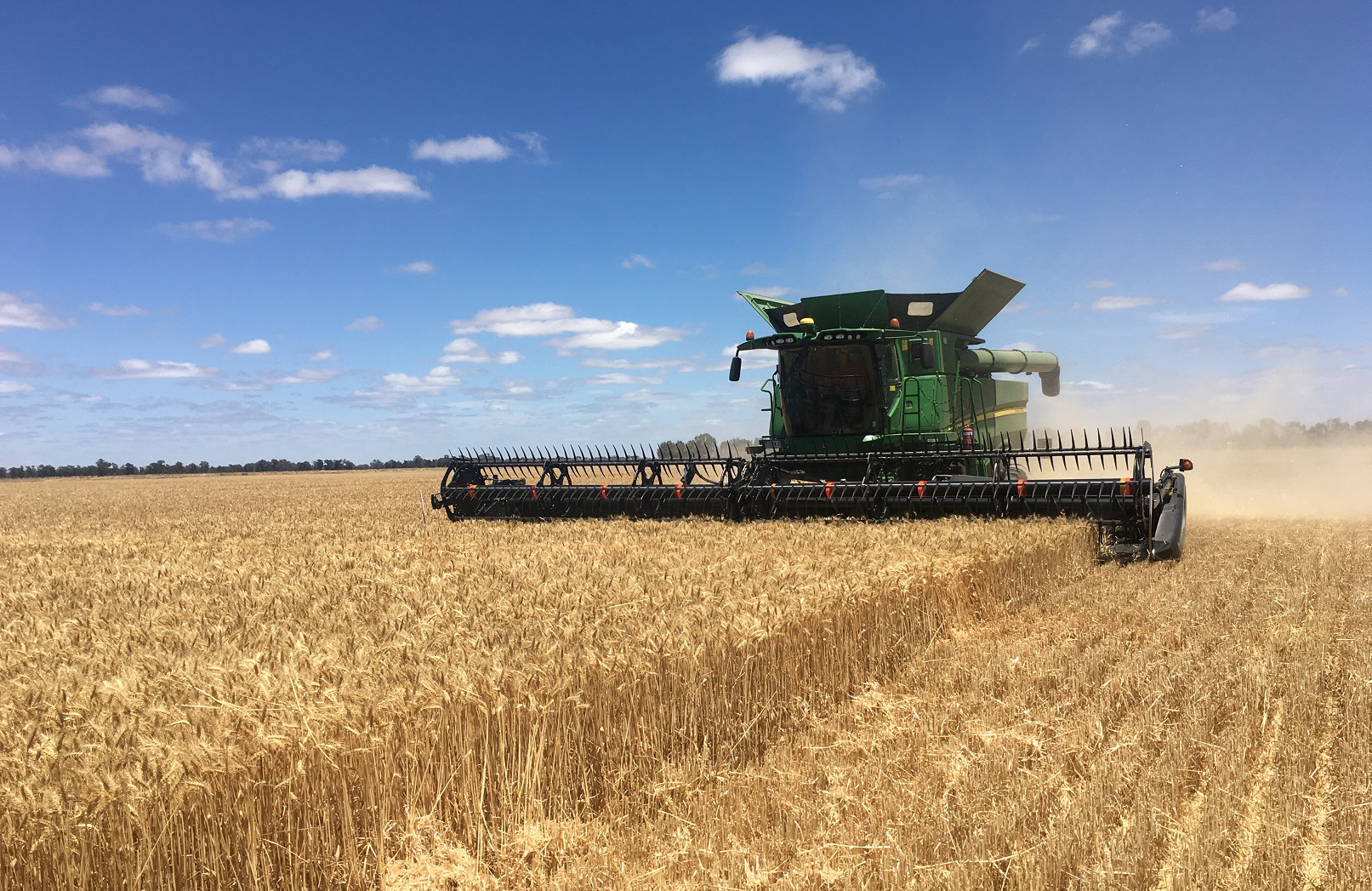
Source Image: www.nationaltribune.com.au
Storage and Transport
Efficient post-harvest handling is essential to preserve grain quality and ensure its marketability. Proper storage and transportation procedures mitigate the risk of spoilage and maintain the integrity of harvested grains from field to market.
Post-Harvest Handling Procedures
After harvesting, grains undergo several post-harvest handling procedures to prepare them for storage and transportation:
- Grain Drying: Removing excess moisture from freshly harvested grains reduces the risk of mold growth and spoilage during storage.
- Storage: Grain storage facilities, such as silos and warehouses, provide protected environments for storing harvested grains until they are ready for sale or processing.
- Transportation: Grain is transported from the field to storage facilities or markets using various methods, including trucks, railroads, and barges.
Table 9: Post-Harvest Handling Procedures
| Procedure | Description |
|---|---|
| Grain Drying | Removing excess moisture from freshly harvested grains to prevent mold growth and spoilage |
| Storage | Utilizing silos and warehouses to provide protected environments for storing grains |
| Transportation | Transporting grains from the field to storage facilities or markets using trucks, railroads, etc. |
- Implementing these procedures ensures the preservation of grain quality and extends its shelf life, enhancing its market value.
Importance of Proper Storage Conditions
Maintaining proper storage conditions is crucial to prevent spoilage and preserve grain quality:
- Temperature and Humidity Control: Monitoring and regulating storage facility conditions, including temperature and humidity levels, prevents moisture buildup and mold growth.
- Pest Management: Implementing pest control measures, such as fumigation and insect monitoring, safeguards grains from infestations that can compromise quality and marketability.
Table 10: Factors Affecting Grain Storage
| Factor | Description |
|---|---|
| Temperature and Humidity | Monitoring and regulating storage conditions to prevent moisture buildup and mold growth |
| Pest Management | Implementing measures to control pests and prevent infestations that can compromise grain quality |
- By prioritizing proper storage conditions, producers can minimize post-harvest losses and maintain the quality of their grain products.
Environmental Considerations
Grain harvesting, while essential for food production, can have significant environmental impacts if not managed sustainably. Addressing these considerations is vital to ensuring the long-term health and resilience of agricultural ecosystems.
Environmental Impacts of Grain Harvesting
Grain harvesting practices can contribute to various environmental challenges:
- Soil Erosion: Intensive tillage and harvesting practices can lead to soil erosion, diminishing soil fertility and degrading ecosystem health.
- Habitat Loss: Converting natural habitats for agricultural purposes, including grain cultivation, can lead to habitat loss and fragmentation, threatening biodiversity.
- Pesticide Use: Widespread pesticide use in grain production can have adverse effects on non-target organisms and ecosystem health.
Table 11: Environmental Impacts of Grain Harvesting
| Environmental Impact | Description |
|---|---|
| Soil Erosion | Intensive tillage and harvesting practices contribute to soil erosion, diminishing soil fertility |
| Habitat Loss | Conversion of natural habitats for grain cultivation leads to habitat loss and fragmentation |
| Pesticide Use | Widespread pesticide use in grain production can have adverse effects on non-target organisms |
- Addressing these environmental impacts requires the adoption of sustainable agricultural practices and conservation measures.
Sustainable Practices for Grain Harvesting
Implementing sustainable practices is essential to minimize environmental harm while maximizing productivity:
- Conservation Tillage: Adopting reduced tillage or no-till practices minimizes soil disturbance, reducing erosion and preserving soil structure.
- Crop Rotation: Rotating grain crops with nitrogen-fixing legumes or cover crops improves soil health and fertility, reducing the need for synthetic inputs.
- Integrated Pest Management: Implementing IPM strategies, such as biological control and crop rotation, reduces reliance on pesticides and minimizes ecological risks.
Table 12: Sustainable Practices for Grain Harvesting
| Sustainable Practice | Description |
|---|---|
| Conservation Tillage | Minimizing soil disturbance through reduced or no-till practices to preserve soil health |
| Crop Rotation | Rotating grain crops with nitrogen-fixing legumes or cover crops to improve soil fertility |
| Integrated Pest Management | Implementing strategies to control pests while minimizing reliance on chemical pesticides |
- By embracing sustainable practices, producers can mitigate the environmental impacts of grain harvesting while ensuring the long-term viability of agricultural systems.

Source Image: dissolve.com
Grain Harvesting
Harvest Festivals and Traditions
Grain harvests have long been celebrated through festivals and cultural traditions, reflecting the profound significance of agriculture in human societies. These festivities offer a glimpse into the rich tapestry of cultural heritage and communal spirit associated with the bounty of the harvest season.
Cultural Celebrations
Around the world, communities gather to celebrate the culmination of the harvest season with vibrant festivals and rituals:
- Harvest Celebrations: Festivals such as Thanksgiving in the United States, Harvest Festival in the UK, and Pongal in South India are dedicated to giving thanks for the bounty of the harvest.
- Folklore and Customs: Traditional customs and folklore surrounding harvest festivals vary widely, from corn dollies in England to rice-pounding ceremonies in Japan, each reflecting unique cultural traditions and beliefs.
Table 13: Cultural Celebrations of the Harvest
| Festival | Description |
|---|---|
| Thanksgiving | An annual holiday in the United States and Canada, celebrated with feasting and gratitude for the harvest |
| Harvest Festival | A traditional event in the UK and other countries, featuring feasts, fairs, and community gatherings |
| Pongal | A multi-day harvest festival in South India, marked by rituals, feasting, and cultural performances |
- These cultural celebrations serve to strengthen community bonds and honor the vital role of agriculture in sustaining human life.
Festive Events and Rituals
Harvest festivals are often accompanied by a variety of festive events and rituals:
- Feasting: Shared meals featuring seasonal produce and traditional dishes are central to many harvest celebrations, fostering a sense of abundance and community.
- Music and Dance: Folk music, dance performances, and cultural events add vibrancy to harvest festivals, providing opportunities for artistic expression and cultural exchange.
- Offerings and Prayers: Rituals such as offering the first fruits of the harvest to deities or spirits and prayers for a bountiful harvest are common across cultures, expressing gratitude and reverence for nature’s abundance.
Table 14: Festive Events and Rituals
| Event | Description |
|---|---|
| Harvest Feast | Shared meals featuring seasonal produce and traditional dishes, fostering community and abundance |
| Music and Dance | Folk performances and cultural events adding vibrancy to harvest festivals, celebrating artistic expression |
| Offerings and Prayers | Rituals expressing gratitude and reverence for nature’s abundance, seeking blessings for future harvests |
- These festive events and rituals embody the cultural significance of the harvest season, celebrating the interconnectedness of humanity and the natural world.
Grain Processing
Once harvested, grains undergo various processing techniques to transform them into a wide range of food products consumed worldwide. From milling and grinding to polishing and refining, these processes unlock the nutritional potential of grains and create diverse culinary staples.
Processing Techniques
Grain processing encompasses a variety of techniques tailored to different grain types and end products:
- Milling: Milling involves grinding grains into flour, a versatile ingredient used in baking, cooking, and food production.
- Grinding: Grinding grains into coarse or fine particles produces products such as cornmeal, semolina, and grits, used in various cuisines and culinary applications.
- Polishing: Polishing removes the outer layers of grains, such as bran and germ, to produce refined grains like white rice and pearled barley, prized for their texture and appearance.
Table 15: Grain Processing Techniques
| Technique | Description |
|---|---|
| Milling | Grinding grains into flour, a versatile ingredient used in baking, cooking, and food production |
| Grinding | Producing coarse or fine particles from grains, used in various cuisines and culinary applications |
| Polishing | Removing outer layers of grains to produce refined grains like white rice and pearled barley |
- These processing techniques unlock the nutritional potential of grains, creating a diverse array of food products enjoyed by people worldwide.
Transformation into Food Products
Processed grains serve as the foundation for a wide range of food products consumed in various cuisines:
- Flour: Flour is a staple ingredient used in baking bread, cakes, pastries, and other baked goods, as well as thickening sauces and batters.
- Rice: Rice is a staple food in many cultures, served as a main dish, side dish, or ingredient in dishes such as sushi, risotto, and rice pudding.
- Cereal: Processed grains are used to produce breakfast cereals, including oatmeal, corn flakes, and wheat bran, providing convenient and nutritious meal options.
Table 16: Food Products from Processed Grains
| Product | Description |
|---|---|
| Flour | Staple ingredient used in baking, cooking, and thickening sauces, providing structure and texture |
| Rice | Staple food in many cuisines, served as a main or side dish, or used in dishes such as sushi and risotto |
| Cereal | Breakfast cereals made from processed grains, providing convenient and nutritious meal options |
- These food products play essential roles in global diets, providing nourishment, sustenance, and culinary diversity.
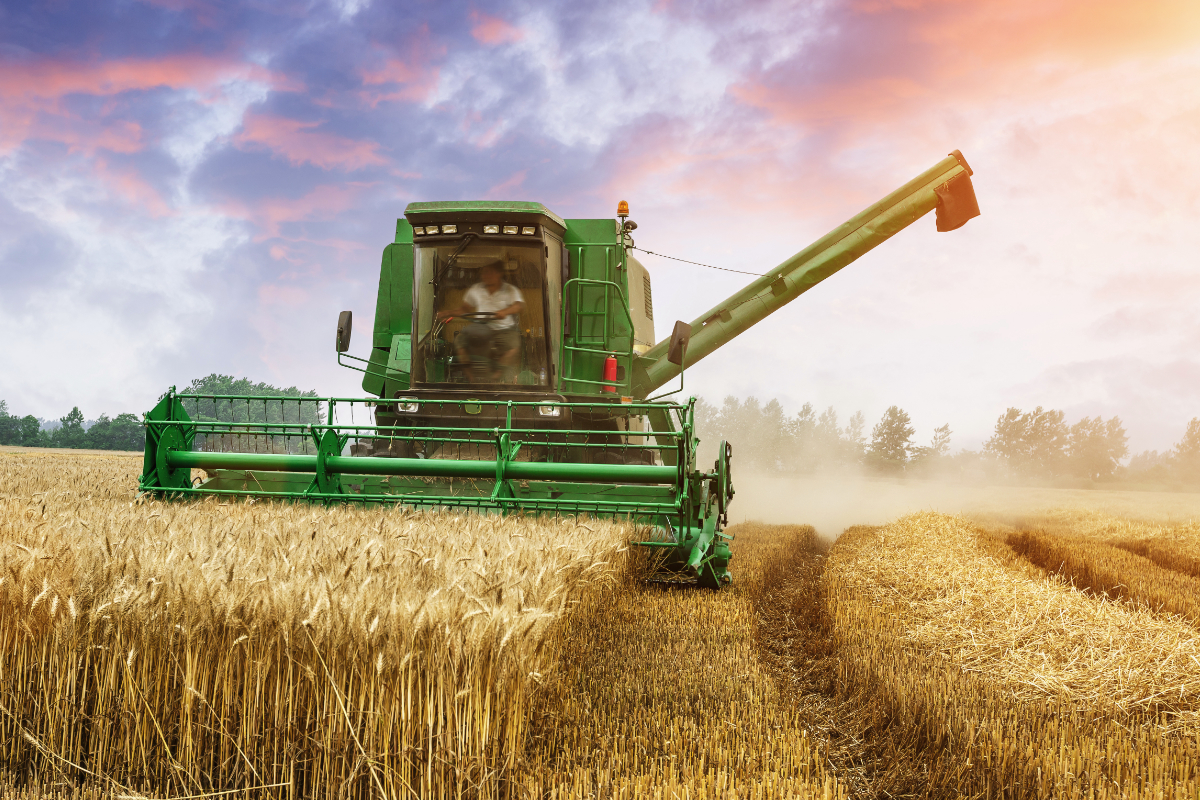
Source Image: www.foodbusinessnews.net
Economic Impacts
The grain harvesting industry exerts significant economic influence on both local and global scales, driving agricultural economies, supporting livelihoods, and contributing to food security and trade networks. Understanding the economic dynamics of grain harvesting sheds light on its broader implications for society and the global food system.
Economic Significance of Grain Harvesting
Grain harvesting plays a central role in the global economy through its contributions to:
- Food Security: Grains serve as a primary source of calories and nutrients for billions of people worldwide, making grain production and harvesting critical for ensuring food security and nutrition.
- Trade and Commerce: Grain commodities are among the most traded agricultural products globally, facilitating international trade and economic exchange between countries and regions.
- Livelihoods: Grain harvesting provides employment and income opportunities for millions of people involved in various stages of the production and supply chain, from farmers and laborers to processors and distributors.
Table 17: Economic Significance of Grain Harvesting
| Aspect | Description |
|---|---|
| Food Security | Grains are a primary source of calories and nutrients, ensuring food security and nutrition for billions of people |
| Trade and Commerce | Grain commodities facilitate international trade and economic exchange, driving economic growth and development |
| Livelihoods | Grain harvesting provides employment and income opportunities for millions of people worldwide |
- These economic contributions underscore the vital role of grain harvesting in sustaining livelihoods and fostering economic development.
Contributions to Food Security
Grain harvesting is essential for ensuring food security and meeting the nutritional needs of growing populations:
- Staple Food Source: Grains, such as wheat, rice, and corn, form the foundation of diets worldwide, providing essential nutrients and calories for sustenance.
- Diversification of Diets: Grain products serve as versatile ingredients in a wide range of cuisines and food products, contributing to dietary diversity and nutritional adequacy.
- Emergency Food Aid: Grain surpluses and reserves play a crucial role in providing emergency food aid during times of crisis, such as natural disasters or conflicts.
Table 18: Contributions to Food Security
| Aspect | Description |
|---|---|
| Staple Food Source | Grains serve as the primary source of calories and nutrients for billions of people worldwide |
| Diversification of Diets | Grain products contribute to dietary diversity and nutritional adequacy, enhancing food security |
| Emergency Food Aid | Grain surpluses and reserves provide essential emergency food aid during times of crisis |
- By ensuring stable access to grains, the grain harvesting industry contributes to global efforts to alleviate hunger and malnutrition.
Implications for Trade and Development
Grain harvesting has profound implications for international trade and economic development:
- Global Market Integration: Grain commodities are traded on international markets, facilitating economic exchange and fostering global market integration.
- Export Revenue: Grain-producing countries generate significant export revenue from the sale of grain commodities, contributing to economic growth and development.
- Market Dynamics: Fluctuations in grain prices and trade patterns influence market dynamics, affecting food prices, inflation rates, and macroeconomic stability.
Table 19: Implications for Trade and Development
| Aspect | Description |
|---|---|
| Global Market Integration | Grain commodities facilitate economic exchange and market integration, connecting producers and consumers worldwide |
| Export Revenue | Grain-producing countries generate export revenue from grain sales, contributing to economic growth and development |
| Market Dynamics | Fluctuations in grain prices and trade patterns influence market dynamics, affecting food prices and macroeconomic stability |
- These economic dynamics highlight the interconnectedness of the global food system and the importance of grain harvesting in shaping trade and development outcomes.
Technological Innovations
Advancements in technology have revolutionized the grain harvesting industry, driving improvements in efficiency, productivity, and sustainability. From precision agriculture to automation and robotics, technological innovations continue to reshape the way grains are produced, harvested, and processed.
Precision Agriculture
Precision agriculture harnesses technology to optimize farm management practices and resource utilization:
- Remote Sensing: Satellite imagery, drones, and sensors provide real-time data on crop health, soil moisture, and environmental conditions, enabling precise decision-making and resource allocation.
- Variable Rate Technology: Precision application of inputs, such as fertilizers and pesticides, based on spatial variability within fields maximizes efficiency and minimizes environmental impact.
Table 20: Precision Agriculture Technologies
| Technology | Description |
|---|---|
| Remote Sensing | Satellite imagery, drones, and sensors provide real-time data on crop health and environmental conditions |
| Variable Rate Technology | Precision application of inputs based on spatial variability within fields maximizes efficiency and minimizes environmental impact |
- Precision agriculture enhances productivity and sustainability by optimizing resource use and minimizing environmental impact.
Automation and Robotics
Automation and robotics are revolutionizing grain harvesting operations, increasing efficiency and reducing labor requirements:
- Autonomous Vehicles: Self-driving tractors and harvesters equipped with GPS and sensors navigate fields autonomously, performing tasks such as planting, spraying, and harvesting with precision.
- Robotic Harvesters: Advanced robotic systems are capable of identifying and harvesting ripe grains with precision, reducing losses and increasing efficiency in grain collection.
Table 21: Automation and Robotics in Grain Harvesting
| Technology | Description |
|---|---|
| Autonomous Vehicles | Self-driving tractors and harvesters equipped with GPS and sensors navigate fields autonomously |
| Robotic Harvesters | Advanced robotic systems capable of identifying and harvesting ripe grains with precision |
- Automation and robotics streamline grain harvesting operations, increasing efficiency and reducing reliance on manual labor.
Future Developments
Continued research and development are driving further innovations in grain harvesting technology:
- Artificial Intelligence: AI-powered systems analyze vast amounts of data to optimize decision-making in farm management, crop selection, and harvesting operations.
- Smart Farming Systems: Integration of IoT devices, data analytics, and machine learning enables real-time monitoring and control of farm operations, enhancing efficiency and sustainability.
Table 22: Future Developments in Grain Harvesting Technology
| Technology | Description |
|---|---|
| Artificial Intelligence | AI-powered systems optimize decision-making in farm management and harvesting operations |
| Smart Farming Systems | Integration of IoT devices and data analytics enables real-time monitoring and control of farm operations |
- These advancements hold the potential to further revolutionize the grain harvesting industry, driving improvements in productivity, sustainability, and resilience.
Challenges and Opportunities
The grain harvesting industry faces a myriad of challenges, ranging from market fluctuations and labor shortages to environmental concerns and climate change. However, amidst these challenges lie opportunities for innovation, diversification, and adaptation, enabling producers to navigate complex agricultural landscapes and build resilient food systems.
Identifying Challenges
Several key challenges confront the grain harvesting industry:
- Market Fluctuations: Volatility in grain prices and demand poses challenges for producers, impacting profitability and market stability.
- Labor Shortages: Difficulty in sourcing and retaining skilled labor for harvesting operations can hinder productivity and increase costs.
- Climate Change: Extreme weather events, shifting precipitation patterns, and rising temperatures pose risks to crop yields and agricultural ecosystems.
- Environmental Concerns: Soil degradation, water scarcity, and biodiversity loss raise concerns about the long-term sustainability of grain production.
Table 23: Challenges Facing the Grain Harvesting Industry
| Challenge | Description |
|---|---|
| Market Fluctuations | Volatility in grain prices and demand poses challenges for producers, impacting profitability |
| Labor Shortages | Difficulty in sourcing and retaining skilled labor for harvesting operations can hinder productivity |
| Climate Change | Extreme weather events, shifting precipitation patterns, and rising temperatures pose risks to crop yields |
| Environmental Concerns | Soil degradation, water scarcity, and biodiversity loss raise concerns about the sustainability of grain production |
- Addressing these challenges requires innovative solutions and adaptive strategies to build resilience and ensure the sustainability of grain harvesting practices.
Opportunities for Innovation
Amidst the challenges, several opportunities for innovation and adaptation present themselves:
- Technology Adoption: Embracing advanced technologies, such as precision agriculture, automation, and data analytics, enhances efficiency, productivity, and sustainability in grain harvesting operations.
- Diversification: Exploring alternative grain varieties, cropping systems, and value-added products diversifies income streams and mitigates risks associated with market fluctuations and climate variability.
- Sustainable Practices: Implementing regenerative agricultural practices, such as conservation tillage, cover cropping, and agroforestry, restores soil health, enhances biodiversity, and mitigates climate change impacts.
Table 24: Opportunities for Innovation in Grain Harvesting
| Opportunity | Description |
|---|---|
| Technology Adoption | Embracing advanced technologies enhances efficiency, productivity, and sustainability in harvesting operations |
| Diversification | Exploring alternative grain varieties and cropping systems diversifies income streams and mitigates risks |
| Sustainable Practices | Implementing regenerative agricultural practices restores soil health, enhances biodiversity, and mitigates climate change impacts |
- Leveraging these opportunities enables producers to overcome challenges and build resilient, sustainable food systems for the future.
Grain harvesting stands as a linchpin of agricultural production, supporting food security, economic development, and cultural heritage worldwide. From ancient hand harvesting techniques to cutting-edge technologies, the journey of grain from field to table is a testament to human ingenuity, resilience, and interconnectedness with the natural world.
As we navigate the complexities of modern agriculture, it is imperative to embrace innovation, sustainability, and collaboration to address the challenges facing the grain harvesting industry. By working together to develop resilient farming practices, foster economic opportunities, and safeguard environmental resources, we can ensure that future generations continue to reap the bountiful harvests of our shared planet.

